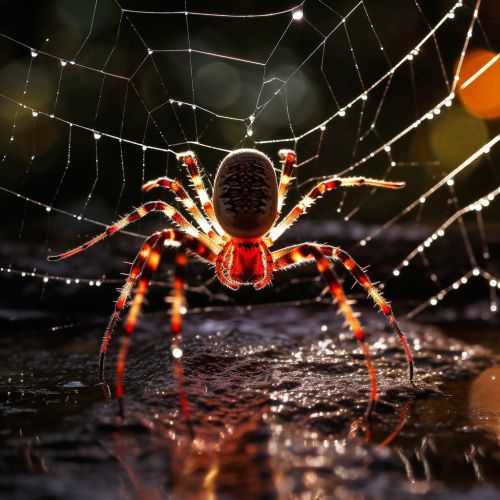Innate behavior
Introduction
Innate behavior, also known as instinctual or inborn behavior, refers to the patterns of behavior that are present in animals from birth and do not need to be learned. These behaviors are genetically programmed and are performed correctly the first time they are executed, without the need for previous experience or training. Innate behaviors are crucial for an animal's survival and reproduction, as they allow an organism to respond quickly to environmental stimuli without the need for conscious thought or learning.
Characteristics of Innate Behavior
Innate behaviors have several defining characteristics. They are:
- Universality: Innate behaviors are common to all members of a species. For example, all spiders of a particular species will build the same type of web, regardless of where they live or their individual experiences.
- Stereotypy: Innate behaviors are performed in the same way each time, regardless of the individual's experience or the specific circumstances. For example, a bird will build its nest in the same way each time, regardless of the materials available or the location of the nest.
- Invariance: Innate behaviors are not influenced by the learning or experience of the individual. For example, a newborn sea turtle will instinctively head towards the sea, even if it has never seen the sea before.
- Spontaneity: Innate behaviors can be performed without any prior experience or training. For example, a bee will know how to collect nectar and pollen from flowers without having to learn how to do so.


Types of Innate Behavior
Innate behaviors can be categorized into several types, based on their complexity and the degree of flexibility they allow. These include:
- Reflexes: These are simple, automatic responses to specific stimuli. Reflexes are the simplest type of innate behavior and are controlled by the nervous system. For example, the knee-jerk reflex in humans is an automatic response to a tap on the knee.
- Fixed action patterns: These are complex sequences of behavior that are triggered by specific stimuli, known as sign stimuli or releasers. Once initiated, a fixed action pattern is usually carried out to completion, regardless of changes in the environment. For example, the courtship dance of a male stickleback fish is a fixed action pattern triggered by the sight of a female.
- Migration: This is the regular, seasonal movement of animals from one location to another. Migration is driven by innate behavior, although it can be influenced by environmental factors. For example, many bird species migrate south for the winter to escape cold temperatures and find food.
- Circadian rhythms: These are innate behaviors that follow a roughly 24-hour cycle. They are controlled by an internal biological clock and are influenced by light and temperature. Examples of circadian rhythms include the sleep-wake cycle in humans and the opening and closing of flowers.
Genetic Basis of Innate Behavior
Innate behaviors are genetically determined and are passed from generation to generation through genes. The genetic basis of innate behavior can be seen in the consistent behavior patterns observed in different individuals of the same species, even when they are raised in different environments.
The genes that control innate behaviors are thought to encode for proteins that affect the structure and function of the nervous system, influencing how an organism responds to specific stimuli. For example, the genes that control the web-building behavior in spiders are thought to affect the development of the spider's nervous system, allowing it to respond to specific environmental cues by building a web.
Research into the genetic basis of innate behavior has also revealed that these behaviors can evolve over time in response to changes in the environment. This is because the genes that control these behaviors can undergo mutation and natural selection, leading to changes in the behaviors themselves.
Innate Behavior and Learning
While innate behaviors are genetically programmed and do not require learning, they can be influenced by an individual's experiences. This interaction between innate behavior and learning is known as instinctual drift.
For example, a bird may have an innate behavior to build a nest, but the specific design of the nest can be influenced by the materials available and the bird's previous experiences. Similarly, a bee may have an innate behavior to collect nectar, but the specific flowers it visits can be influenced by the bee's previous experiences and the availability of different types of flowers.
This interaction between innate behavior and learning allows animals to adapt their behaviors to their specific circumstances, increasing their chances of survival and reproduction.
Conclusion
Innate behavior plays a crucial role in the survival and reproduction of animals. These behaviors, which are genetically programmed and do not require learning, allow animals to respond quickly and effectively to environmental stimuli. While innate behaviors are fixed and unchanging, they can be influenced by an individual's experiences, allowing for a degree of flexibility and adaptation.
